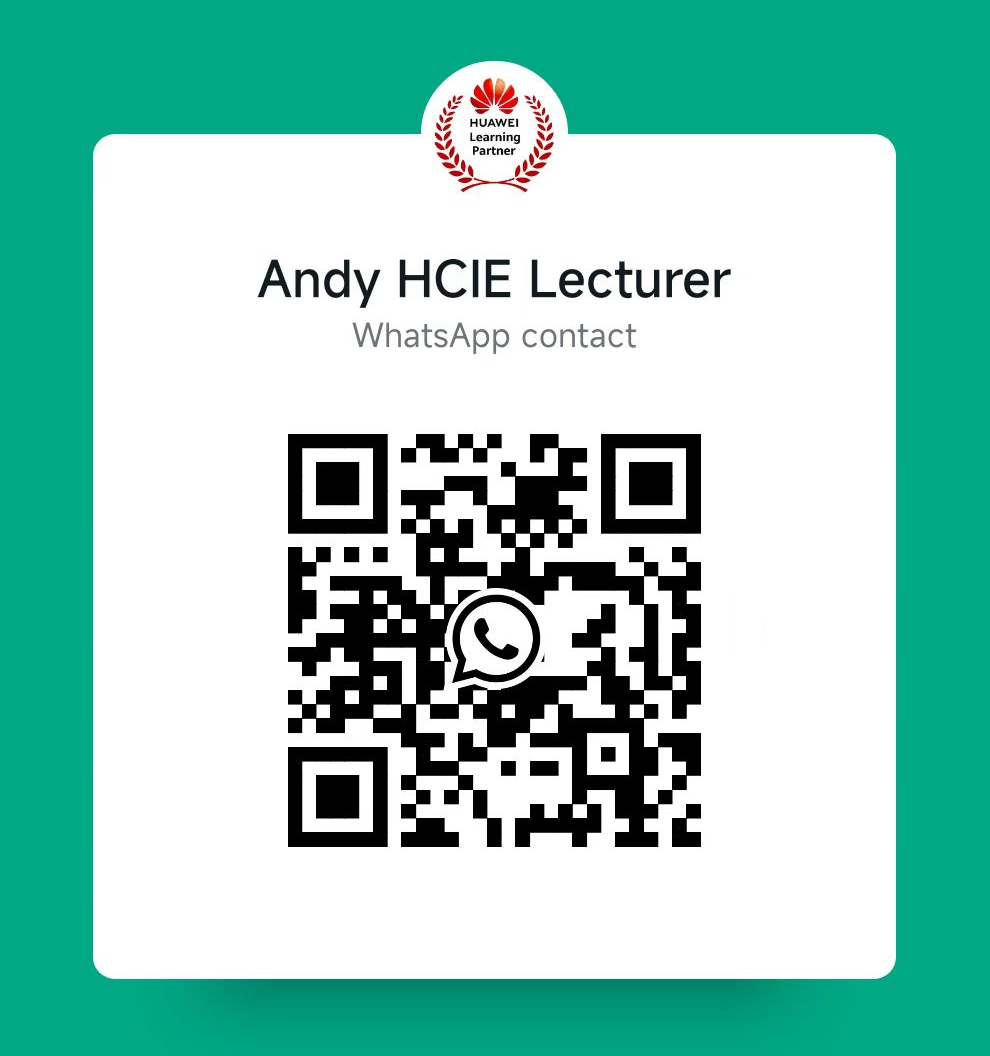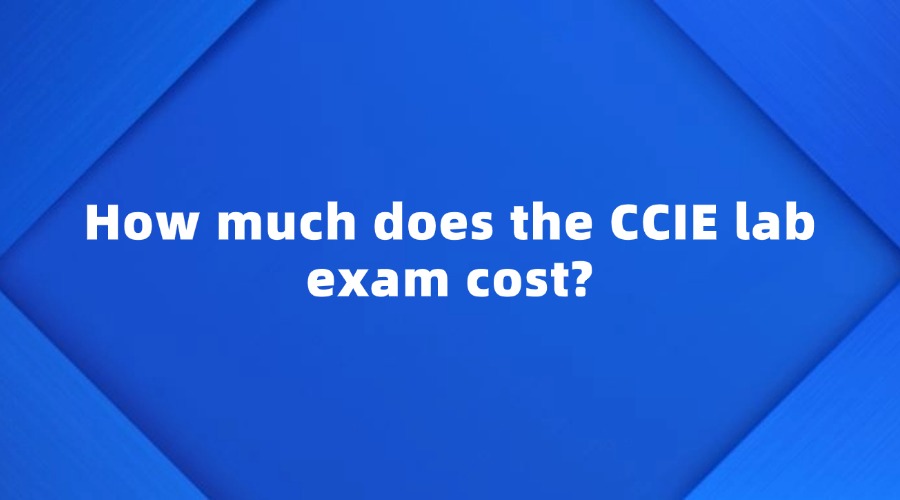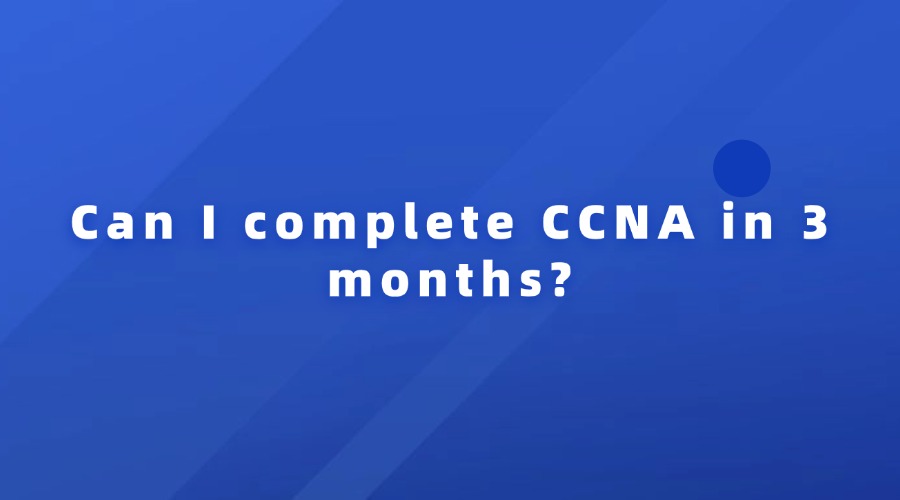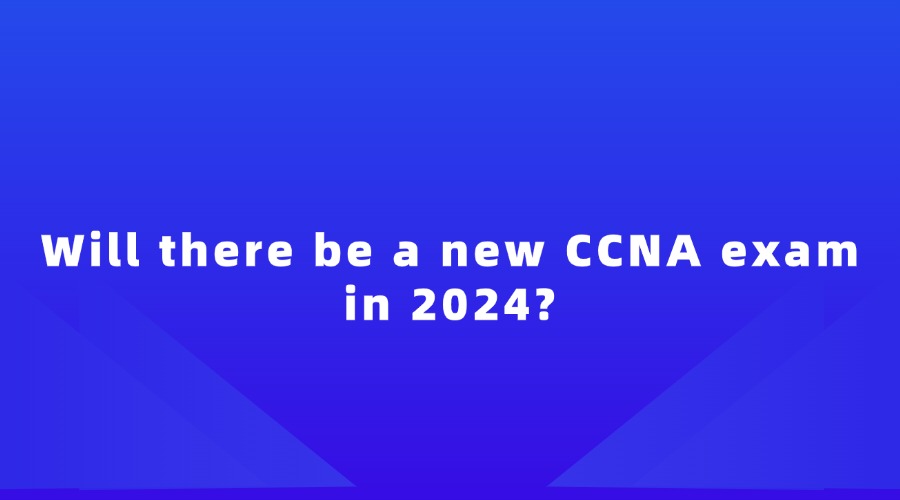What types of questions are on the CCNP exam?
Update time:2024-11-09
The Cisco Certified Network Professional (CCNP) certification is highly sought after by networking professionals who want to deepen their expertise in specific areas of networking technologies. The CCNP exam evaluates a candidate's knowledge across a range of topics, including routing, switching, security, wireless networking, and collaboration, depending on the specific CCNP track chosen. As the exam is comprehensive, candidates can expect a variety of question types designed to assess both theoretical knowledge and practical application.

In this article, we will explore the different types of questions you can expect on the CCNP exam, how these questions test your skills, and some tips on preparing for the exam.
Multiple Choice Questions
The most common question type you’ll encounter on the CCNP exam is the multiple-choice question (MCQ). These questions present a problem or scenario, followed by several possible answers, out of which only one or sometimes multiple options are correct.
For example, you might be asked about specific configurations or protocols:
Which command would you use to configure a router for OSPF?
Select the routing protocol that provides the fastest convergence in a large-scale network.
Multiple-choice questions test your theoretical knowledge of concepts such as networking protocols, device configurations, and troubleshooting techniques. Cisco tends to include a mix of straightforward questions and more challenging ones that require in-depth understanding or real-world application.
Multiple Answer Questions
A variation of the standard multiple-choice question is the multiple answer question, where more than one option may be correct. This type of question tests your ability to think critically about complex networking problems.
For example:
Which of the following are valid configurations for an EIGRP neighbor relationship? (Select all that apply.)
You’ll need to be extra cautious when answering these questions, as missing one correct answer or selecting an incorrect option could result in a loss of points.
Drag-and-Drop Questions
Cisco also incorporates drag-and-drop questions in the CCNP exam. These are interactive questions that require you to arrange items in a particular order or match terms with their corresponding definitions.
For instance, you might need to:
Match each routing protocol with its corresponding characteristics.
Arrange the steps involved in configuring a BGP connection.
Drag-and-drop questions are useful for testing your practical understanding of networking processes, as they often mimic real-world tasks like troubleshooting or designing network configurations.
Scenario-Based Questions
The CCNP exam includes scenario-based questions, where you are presented with a detailed networking scenario and then asked a series of related questions. These questions are designed to simulate real-world networking challenges and require you to apply your theoretical knowledge to practical situations.
For example, you might be given a network topology and asked:
Given this network setup, which of the following troubleshooting steps should be performed to resolve connectivity issues?
These questions test your ability to analyze, diagnose, and resolve network issues based on a provided scenario. They also evaluate your knowledge of network design and implementation strategies.
Contact me immediately to get the golden key helping you fast express your certificate. Simulations and Lab Exercises
One of the most challenging and practical aspects of the CCNP exam is the simulation or lab exercises. In these questions, you’ll be placed in a simulated environment that mimics a real-world network. You are required to configure devices, troubleshoot network problems, or optimize existing setups.
For instance, you could be asked to:
Configure a router to support OSPF in a multi-area network.
Troubleshoot an issue with a BGP connection between two routers.
Simulation questions test not only your theoretical understanding but also your ability to implement that knowledge in practical situations. These questions are more time-consuming than multiple-choice questions and require a deep understanding of networking technologies.
Testlets
Testlets are a series of related questions based on a single scenario or topic. They are usually presented after you’ve read a detailed description of a network configuration or problem. Testlets are similar to scenario-based questions but usually contain multiple related questions, often with various types (multiple-choice, drag-and-drop, etc.).
For example, after reading about a network setup, you might be asked several questions such as:
What changes would you make to improve network security in this scenario?
How would you optimize the routing configuration to reduce latency?
Testlets are an excellent way for Cisco to assess your comprehensive understanding of networking issues, as they require you to integrate various concepts and techniques.
Fill-in-the-Blank Questions
Another question type that may appear on the CCNP exam is the fill-in-the-blank question. In this type of question, you are required to complete a statement or configuration command by typing in the missing information.
For example:
What is the default administrative distance for OSPF?
Complete the following command to enable a VLAN on a Cisco switch: `vlan ___ name ___`.
Fill-in-the-blank questions test your precise knowledge of commands, protocols, and settings. Unlike multiple-choice questions, you can’t rely on process-of-elimination strategies here—you need to know the answer exactly.
Exam Strategy and Tips
Given the range of question types on the CCNP exam, it’s important to prepare thoroughly. Here are some strategies to help you succeed:
1. Understand the Exam Blueprint: Each CCNP certification track has an exam blueprint that outlines the key topics and areas to be covered. Make sure to study this blueprint and prioritize topics that are frequently tested.
2. Practice Labs: Since simulations and lab exercises are a big part of the CCNP exam, make sure you get hands-on experience by practicing on real or virtual lab environments.
3. Use Practice Tests: Taking practice exams can help you become familiar with the format and timing of the test. Practice questions also help you identify areas where you need more study.
4. Time Management: Some questions, especially simulations and scenario-based ones, can take longer than others. Make sure to pace yourself during the exam and allocate more time to these complex questions.
5. Review and Revise: Make use of study guides, online resources, and exam-specific training materials to reinforce your knowledge before the exam.
Conclusion
The CCNP exam includes a variety of question types, from multiple-choice and drag-and-drop questions to more complex simulations and lab exercises. To succeed, candidates need a deep understanding of networking technologies, practical experience, and a strategic approach to exam preparation. By familiarizing yourself with these question formats and focusing on hands-on practice, you can be well-prepared to tackle the CCNP exam and take the next step in your networking career.
I'm your man who have the 100% valid dumps , buy it now for 50% off to clear your exam!
Click it ↓↓

In this article, we will explore the different types of questions you can expect on the CCNP exam, how these questions test your skills, and some tips on preparing for the exam.
Multiple Choice Questions
The most common question type you’ll encounter on the CCNP exam is the multiple-choice question (MCQ). These questions present a problem or scenario, followed by several possible answers, out of which only one or sometimes multiple options are correct.
For example, you might be asked about specific configurations or protocols:
Which command would you use to configure a router for OSPF?
Select the routing protocol that provides the fastest convergence in a large-scale network.
Multiple-choice questions test your theoretical knowledge of concepts such as networking protocols, device configurations, and troubleshooting techniques. Cisco tends to include a mix of straightforward questions and more challenging ones that require in-depth understanding or real-world application.
Multiple Answer Questions
A variation of the standard multiple-choice question is the multiple answer question, where more than one option may be correct. This type of question tests your ability to think critically about complex networking problems.
For example:
Which of the following are valid configurations for an EIGRP neighbor relationship? (Select all that apply.)
You’ll need to be extra cautious when answering these questions, as missing one correct answer or selecting an incorrect option could result in a loss of points.
Drag-and-Drop Questions
Cisco also incorporates drag-and-drop questions in the CCNP exam. These are interactive questions that require you to arrange items in a particular order or match terms with their corresponding definitions.
For instance, you might need to:
Match each routing protocol with its corresponding characteristics.
Arrange the steps involved in configuring a BGP connection.
Drag-and-drop questions are useful for testing your practical understanding of networking processes, as they often mimic real-world tasks like troubleshooting or designing network configurations.
Scenario-Based Questions
The CCNP exam includes scenario-based questions, where you are presented with a detailed networking scenario and then asked a series of related questions. These questions are designed to simulate real-world networking challenges and require you to apply your theoretical knowledge to practical situations.
For example, you might be given a network topology and asked:
Given this network setup, which of the following troubleshooting steps should be performed to resolve connectivity issues?
These questions test your ability to analyze, diagnose, and resolve network issues based on a provided scenario. They also evaluate your knowledge of network design and implementation strategies.
Contact me immediately to get the golden key helping you fast express your certificate. Simulations and Lab Exercises
One of the most challenging and practical aspects of the CCNP exam is the simulation or lab exercises. In these questions, you’ll be placed in a simulated environment that mimics a real-world network. You are required to configure devices, troubleshoot network problems, or optimize existing setups.
For instance, you could be asked to:
Configure a router to support OSPF in a multi-area network.
Troubleshoot an issue with a BGP connection between two routers.
Simulation questions test not only your theoretical understanding but also your ability to implement that knowledge in practical situations. These questions are more time-consuming than multiple-choice questions and require a deep understanding of networking technologies.
Testlets
Testlets are a series of related questions based on a single scenario or topic. They are usually presented after you’ve read a detailed description of a network configuration or problem. Testlets are similar to scenario-based questions but usually contain multiple related questions, often with various types (multiple-choice, drag-and-drop, etc.).
For example, after reading about a network setup, you might be asked several questions such as:
What changes would you make to improve network security in this scenario?
How would you optimize the routing configuration to reduce latency?
Testlets are an excellent way for Cisco to assess your comprehensive understanding of networking issues, as they require you to integrate various concepts and techniques.
Fill-in-the-Blank Questions
Another question type that may appear on the CCNP exam is the fill-in-the-blank question. In this type of question, you are required to complete a statement or configuration command by typing in the missing information.
For example:
What is the default administrative distance for OSPF?
Complete the following command to enable a VLAN on a Cisco switch: `vlan ___ name ___`.
Fill-in-the-blank questions test your precise knowledge of commands, protocols, and settings. Unlike multiple-choice questions, you can’t rely on process-of-elimination strategies here—you need to know the answer exactly.
Exam Strategy and Tips
Given the range of question types on the CCNP exam, it’s important to prepare thoroughly. Here are some strategies to help you succeed:
1. Understand the Exam Blueprint: Each CCNP certification track has an exam blueprint that outlines the key topics and areas to be covered. Make sure to study this blueprint and prioritize topics that are frequently tested.
2. Practice Labs: Since simulations and lab exercises are a big part of the CCNP exam, make sure you get hands-on experience by practicing on real or virtual lab environments.
3. Use Practice Tests: Taking practice exams can help you become familiar with the format and timing of the test. Practice questions also help you identify areas where you need more study.
4. Time Management: Some questions, especially simulations and scenario-based ones, can take longer than others. Make sure to pace yourself during the exam and allocate more time to these complex questions.
5. Review and Revise: Make use of study guides, online resources, and exam-specific training materials to reinforce your knowledge before the exam.
Conclusion
The CCNP exam includes a variety of question types, from multiple-choice and drag-and-drop questions to more complex simulations and lab exercises. To succeed, candidates need a deep understanding of networking technologies, practical experience, and a strategic approach to exam preparation. By familiarizing yourself with these question formats and focusing on hands-on practice, you can be well-prepared to tackle the CCNP exam and take the next step in your networking career.
I'm your man who have the 100% valid dumps , buy it now for 50% off to clear your exam!
Click it ↓↓














